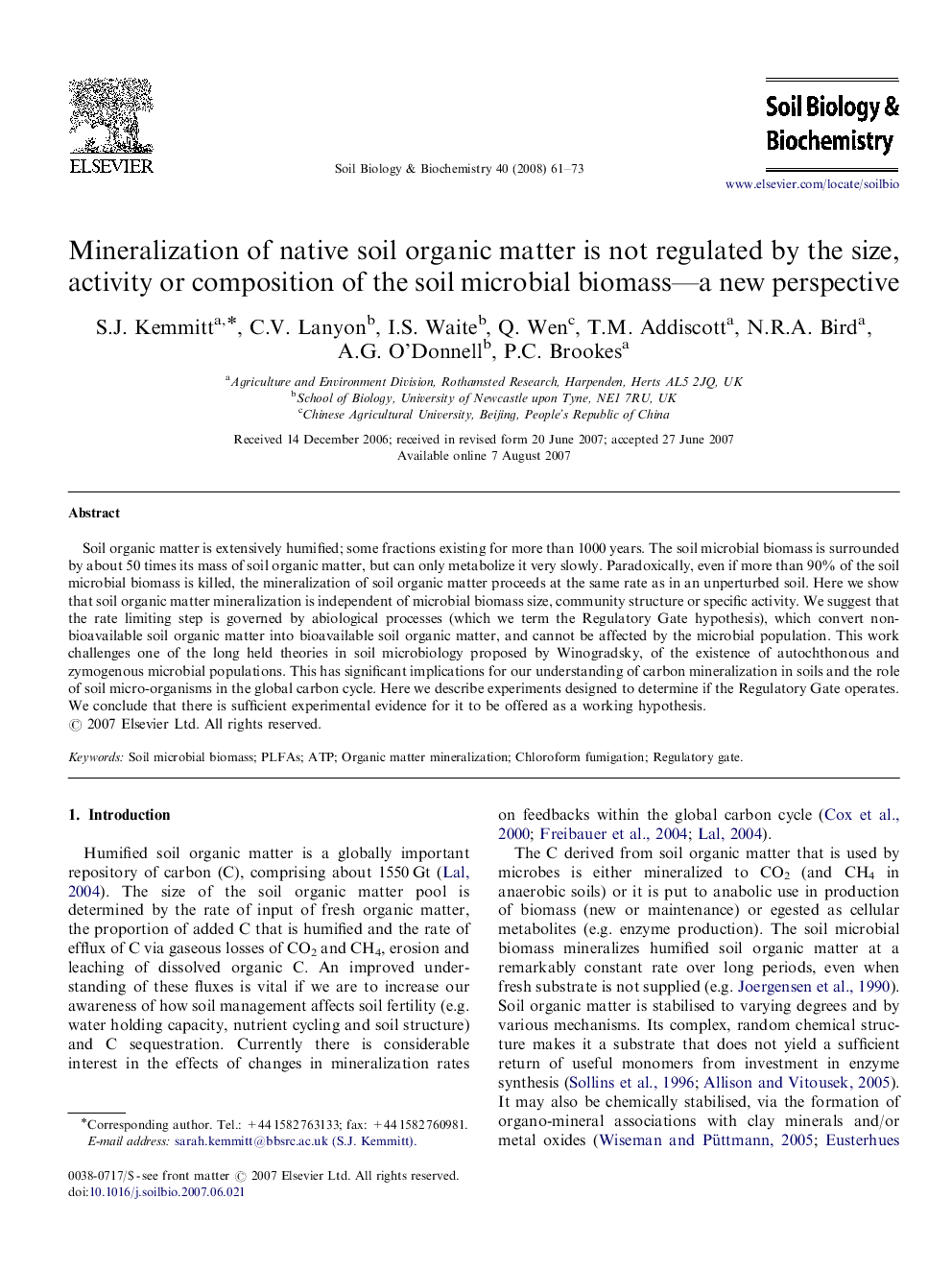| Article ID | Journal | Published Year | Pages | File Type |
|---|---|---|---|---|
| 2025478 | Soil Biology and Biochemistry | 2008 | 13 Pages |
Soil organic matter is extensively humified; some fractions existing for more than 1000 years. The soil microbial biomass is surrounded by about 50 times its mass of soil organic matter, but can only metabolize it very slowly. Paradoxically, even if more than 90% of the soil microbial biomass is killed, the mineralization of soil organic matter proceeds at the same rate as in an unperturbed soil. Here we show that soil organic matter mineralization is independent of microbial biomass size, community structure or specific activity. We suggest that the rate limiting step is governed by abiological processes (which we term the Regulatory Gate hypothesis), which convert non-bioavailable soil organic matter into bioavailable soil organic matter, and cannot be affected by the microbial population. This work challenges one of the long held theories in soil microbiology proposed by Winogradsky, of the existence of autochthonous and zymogenous microbial populations. This has significant implications for our understanding of carbon mineralization in soils and the role of soil micro-organisms in the global carbon cycle. Here we describe experiments designed to determine if the Regulatory Gate operates. We conclude that there is sufficient experimental evidence for it to be offered as a working hypothesis.
